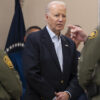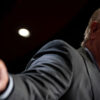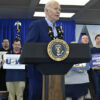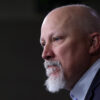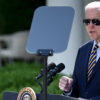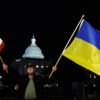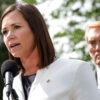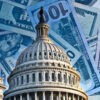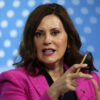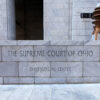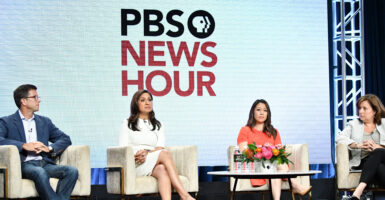PBS has an undeserved reputation for trustworthiness.
The latest annual YouGov poll on trust in media found the most trusted channel is The Weather Channel, because there’s only so much spin you can put in your weather forecast. But coming in second was PBS, with 30% more people finding it trustworthy versus untrustworthy.
Right below that on the list is the BBC, although you’d have to wonder how many Americans are getting their news straight from England. So, we can assume that the “public” nature of the outlet makes people think it’s somehow neutral.
At the end of 2022, incoming “PBS NewsHour” co-anchor Amna Nawaz uncorked some branding chatter with The Hollywood Reporter: “The reason that the ‘NewsHour’ is the most trusted and credible brand in journalism today is because of the mission-focused work and because of the fact that we seek to add light and not heat, and I think [co-host Geoff Bennett] and I have always practiced our journalism that way.”
“Light, not heat”—that’s the branding. It’s a lie. PBS isn’t much different from CNN or MSNBC.
A new study of the first four months of the new Congress by Rich Noyes of the Media Research Center finds the PBS “news” tilts hard toward the Democrats.
1) By a 5-to-1 margin, the “NewsHour” promoted controversies involving congressional Republicans over those involving congressional Democrats. The PBS show spent more than 97 minutes highlighting the (mostly negative) controversies involving the party. The travails of habitual Republican liar Rep. George Santos drew 17 minutes of coverage, more than all Democrat controversies combined.
2) Discussion of the top policy issues (including the debt ceiling, gun rights, and immigration) was skewed heavily against Republicans. On Jan. 19, anchorman Bennett complained about “hard-line Republican members of the House willing to play roulette with a still-vulnerable economy.” So much for “light, not heat.”
In a segment on guns, Brady Campaign President Kris Brown responded to a sound bite of a Republican congressman: “We have to hold people like that lawmaker and others to account. They have blood on their hands.” PBS offered no pushback. Brown said it in an answer that ran for almost two minutes. There was no debate.
3) Republicans were often (20 times) branded as extremists (“far right,” “hard right,” etc.) by “NewsHour” correspondents or commentators. Left-wing Democrats were never “far left” or “hard left,” not even socialists like Sen. Bernie Sanders, I-Vt. In a January discussion on the debt ceiling, PBS analyst David Brooks claimed Republicans trying to negotiate with President Joe Biden to advocate for any spending cuts were crazy, “just this nihilistic wing” of the party.
4) Overall, congressional Republicans faced 85% negative coverage, compared to 54% positive coverage of congressional Democrats. Noyes counted sound bites from nonpartisan sources (no Democratic or Republican partisans) and tallied 158 negative statements about Republican members or congressional Republicans in general, compared to just 28 positive statements about the GOP—an 85% negative spin score.
By contrast, the Democrats drew only 28 evaluations—15 positive comments to 13 negative comments. If the (mostly negative) comments about the competency of Sen. Dianne Feinstein, D-Calif., are excluded, this rises to a remarkable 72% positive for Democrats.
The “PBS NewsHour” website explains that 35% of its funding comes from the federal Corporation for Public Broadcasting, including fees from PBS stations across America. It would seem only fair that Republican taxpayers expect the PBS “news” program to offer fairness and balance.
It doesn’t. Night after night, PBS kicks Republicans in the keister.
COPYRIGHT 2023 CREATORS.COM
The Daily Signal publishes a variety of perspectives. Nothing written here is to be construed as representing the views of The Heritage Foundation.
Have an opinion about this article? To sound off, please email letters@DailySignal.com and we’ll consider publishing your edited remarks in our regular “We Hear You” feature. Remember to include the url or headline of the article plus your name and town and/or state.





